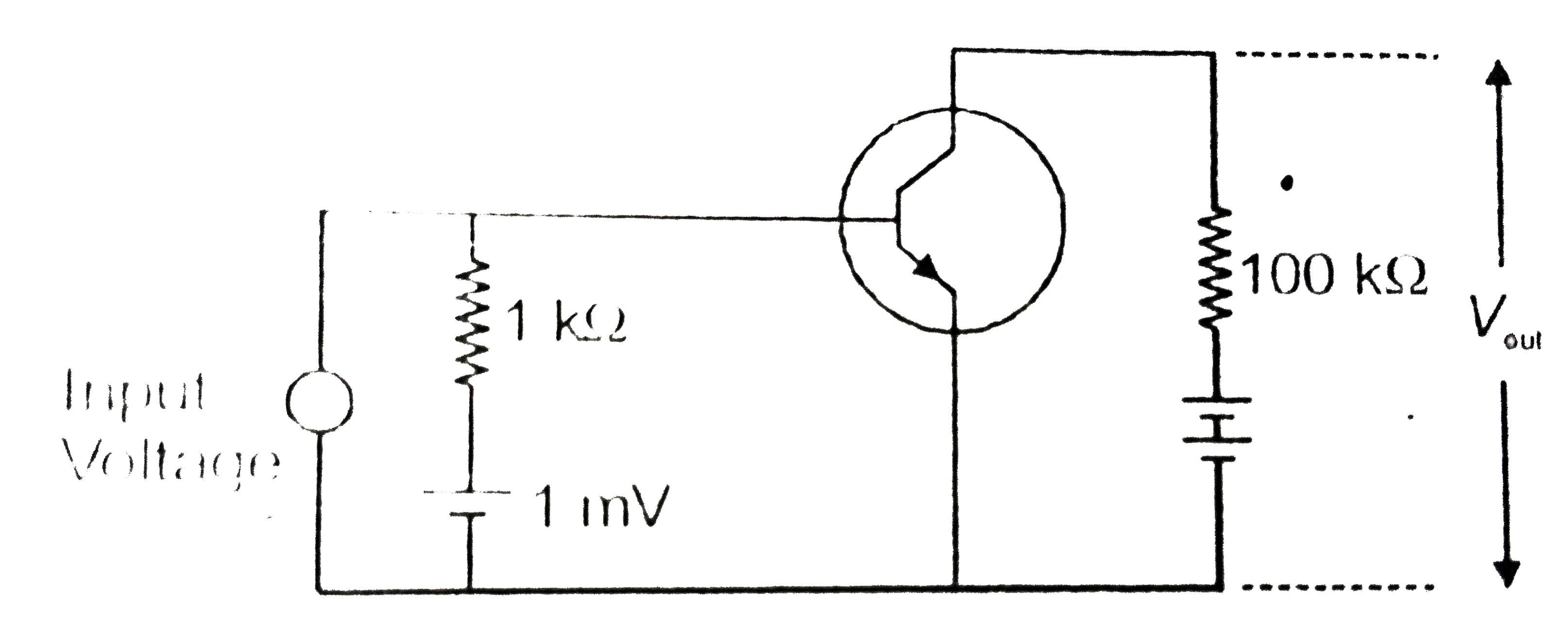In CE configuration transistor, the current gain
Is always less than 1
Is always infinity
Is always greater than 200
Lies in between 20 and 200
The correct Answer is:D
To solve the question regarding the current gain in a common emitter (CE) configuration transistor, we will follow these steps:
Step 1: Understand the Definition of Current Gain
The current gain (beta, β) in a common emitter configuration is defined as the ratio of the change in collector current (ΔIC) to the change in base current (ΔIB). Mathematically, it is expressed as:
β=ΔICΔIB
Step 2: Analyze the Options Given
The question provides four options regarding the value of beta:
1. Always less than 1
2. Always infinity
3. Always greater than 200
4. Lies between 20 and 200
Step 3: Evaluate Each Option
- Option 1: "Always less than 1" - This is incorrect because beta is typically greater than 1 for common emitter transistors.
- Option 2: "Always infinity" - This is also incorrect as beta is a finite value.
- Option 3: "Always greater than 200" - This is not true; while some transistors may have high beta, it is not universally greater than 200.
- Option 4: "Lies between 20 and 200" - This is the correct option. For most common emitter transistors, the value of beta typically falls within this range.
Step 4: Conclusion
Based on the analysis, the correct answer is:
Option 4: Lies between 20 and 200.
The current gain (beta, β) in a common emitter configuration is defined as the ratio of the change in collector current (ΔIC) to the change in base current (ΔIB). Mathematically, it is expressed as:
β=ΔICΔIB
The question provides four options regarding the value of beta:
1. Always less than 1
2. Always infinity
3. Always greater than 200
4. Lies between 20 and 200
- Option 1: "Always less than 1" - This is incorrect because beta is typically greater than 1 for common emitter transistors.
- Option 2: "Always infinity" - This is also incorrect as beta is a finite value.
- Option 3: "Always greater than 200" - This is not true; while some transistors may have high beta, it is not universally greater than 200.
- Option 4: "Lies between 20 and 200" - This is the correct option. For most common emitter transistors, the value of beta typically falls within this range.
Based on the analysis, the correct answer is:
Option 4: Lies between 20 and 200.
Topper's Solved these Questions
- SEMICONDUCTOR DEVICESBook:AAKASH SERIESChapter:SEMICONDUCTOR DEVICESExercise:EXERCISE -I (LOGIC GATES)
Explore 17 Videos
- SEMICONDUCTOR DEVICESBook:AAKASH SERIESChapter:SEMICONDUCTOR DEVICESExercise:EXERCISE -I (MATCHING TYPE QUESTIONS)
Explore 9 Videos
- SEMICONDUCTOR DEVICESBook:AAKASH SERIESChapter:SEMICONDUCTOR DEVICESExercise:EXERCISE -I (P-N JUNCTION DIODE)
Explore 30 Videos
- RAY OPTICSBook:AAKASH SERIESChapter:RAY OPTICSExercise:PROBLEMS ( LEVEL-II)
Explore 60 Videos
- UNITS AND MEASUREMENTBook:AAKASH SERIESChapter:UNITS AND MEASUREMENTExercise:PRACTICE EXERCISE
Explore 45 Videos
Similar Questions
In the following common emitter configuration an NPN transistor with current gain β=100 is used. The output voltage of the amlifier will be

View SolutionIn the following common emitter configuration an NPN transistor with current gain β=100 is used. The output voltage of the amlifier will be

View SolutionIn a common emitter transistor, the current gain is 80. What is the change in collector current, when the change in base current is 250μA?
View SolutionIn common - emitter configuration of a transistor, the base current IE=2μA,α=0.9 then the value of IC is
View SolutionIn which of the configuration of a transistor , the power gain is highest ?
View SolutionIn the following common emitter configuration an n-p-n transistor with current gain β=100 is used. What is the output voltage of the amplifier ?

View SolutionIf α and β current gains in common-base and common-emitter configuration of a transistor, then β is equal to
View SolutionAssertion : In common base configuration, the current gain of the transistor is less than unity.
Reason : The collector terminal is revers biased for amplification.
View SolutionIn a common base transistor circuit, the current gain is 0.98. On changing the emitter current by 1 mA, the change in collector current is
View SolutionIn a common base transistor circuit, the current gain is 0.98. On changing the emitter current by 5.00 mA, the change in collector current is
View Solution

